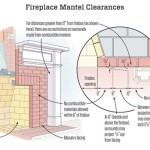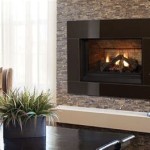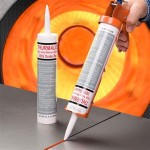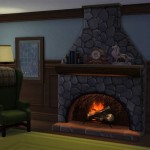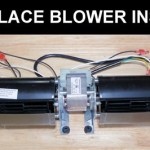Propane Insert Fireplaces: A Comprehensive Guide
Propane insert fireplaces offer a convenient and efficient solution for homeowners seeking to upgrade existing wood-burning fireplaces or add supplemental heating to their homes. These inserts are designed to fit directly into existing fireplace openings, transforming them into clean-burning, easily controllable heat sources. This article provides a detailed overview of propane insert fireplaces, covering their functionality, advantages, installation, maintenance, and factors to consider when selecting the right model.
The core function of a propane insert fireplace is to generate heat by burning propane gas. This process is significantly cleaner and more efficient than burning wood, reducing emissions and minimizing the need for constant tending. Modern propane inserts incorporate advanced technologies to maximize heat output and provide precise temperature control. They offer a convenient alternative to traditional wood-burning fireplaces, eliminating the need for wood storage, chopping, and cleaning up ashes.
Propane insert fireplaces operate by drawing propane from a dedicated tank or a natural gas line (with a conversion kit). The gas is fed into a burner, where it is ignited, producing flames that heat a heat exchanger within the insert. A fan then circulates the heated air into the room. Thermostatic controls allow homeowners to set a desired temperature, and the insert will automatically adjust its flame intensity to maintain that temperature. This provides consistent and comfortable heating throughout the designated space.
Advantages of Propane Insert Fireplaces
Propane insert fireplaces offer a multitude of benefits compared to traditional wood-burning fireplaces and other heating alternatives. These advantages contribute to their growing popularity among homeowners seeking efficient and convenient heating solutions.
Efficiency: Propane inserts boast significantly higher efficiency ratings than traditional wood-burning fireplaces. While wood-burning fireplaces often lose a substantial amount of heat up the chimney, propane inserts are designed to maximize heat retention and distribution. Modern propane inserts can achieve efficiency ratings of up to 80%, meaning that a greater percentage of the fuel's energy is converted into usable heat. This increased efficiency translates into lower heating costs and reduced energy consumption.
Cleanliness: The combustion of propane produces significantly fewer emissions compared to burning wood. Propane burns cleanly, generating less soot, creosote, and particulate matter. This reduces the risk of chimney fires and improves indoor air quality. The absence of wood ash eliminates the need for frequent cleaning and disposal, further enhancing the convenience of propane inserts.
Convenience: Propane inserts offer unparalleled convenience compared to wood-burning fireplaces. With a propane insert, there is no need to chop, stack, or store wood. The insert is operated with a simple on/off switch or remote control, allowing for instant heat at the touch of a button. Thermostatic controls provide precise temperature regulation, ensuring consistent comfort levels. The absence of wood ash and debris eliminates the need for frequent cleaning and maintenance.
Safety: Propane inserts offer enhanced safety features compared to traditional fireplaces. Modern inserts are equipped with safety shut-off valves that automatically cut off the gas supply in the event of a malfunction or system failure. The sealed combustion chamber prevents the escape of harmful gases into the home. The absence of sparks and embers eliminates the risk of accidental fires. These safety features provide peace of mind for homeowners.
Aesthetics: Propane inserts are available in a wide range of styles and finishes to complement any home décor. From traditional designs with realistic log sets to contemporary models with sleek glass fronts, there is a propane insert to suit every taste. The visual appeal of a fireplace adds ambiance and warmth to a room, enhancing the overall living experience. Many models also offer adjustable flame heights and ember bed lighting, allowing homeowners to customize the look and feel of their fireplace.
Installation of Propane Insert Fireplaces
The installation of a propane insert fireplace is a crucial step in ensuring its safe and efficient operation. While some homeowners may attempt a DIY installation, it is generally recommended to hire a qualified and certified professional to perform the installation. Proper installation involves several key steps.
Inspection: A professional installer will begin by inspecting the existing fireplace and chimney to ensure that they are in good condition and suitable for the installation of a propane insert. The chimney will be checked for any cracks, obstructions, or structural damage. The installer will also assess the availability of a propane supply line and determine the appropriate venting requirements.
Preparation: The existing fireplace opening will be cleaned and prepared for the installation of the insert. Any loose bricks or mortar will be repaired, and the firebox will be thoroughly cleaned. A non-combustible hearth extension may be required to provide adequate protection for the surrounding flooring. The installer will also ensure that the fireplace opening is properly sized to accommodate the chosen insert.
Venting: Proper venting is essential for the safe and efficient operation of a propane insert. The venting system must be designed to exhaust combustion gases safely to the outside. There are two main types of venting systems used with propane inserts: direct vent and B-vent. Direct vent systems draw combustion air from outside the home and exhaust combustion gases directly to the outside through a sealed system. B-vent systems use the existing chimney to exhaust combustion gases. The choice of venting system will depend on the specific insert model and the existing chimney configuration.
Connection: The propane insert will be carefully positioned within the fireplace opening and secured in place. The gas line will be connected to the insert, and all connections will be checked for leaks. The electrical connections will be made to provide power for the fan and controls. The installer will ensure that all connections are properly grounded and comply with local building codes.
Testing: Once the installation is complete, the installer will thoroughly test the propane insert to ensure that it is operating correctly. The insert will be ignited, and the flame will be inspected for proper height and color. The thermostat will be tested to ensure that it is accurately regulating the temperature. The venting system will be checked for proper draft and the absence of leaks. The installer will also provide the homeowner with instructions on how to operate and maintain the insert.
Maintenance of Propane Insert Fireplaces
Regular maintenance is essential for ensuring the long-term performance and safety of a propane insert fireplace. Proper maintenance involves several key tasks that should be performed on a regular basis.
Cleaning: The exterior of the propane insert should be cleaned regularly to remove dust and debris. A soft cloth or brush can be used to clean the insert's cabinet and glass door. The glass door should be cleaned with a specialized fireplace glass cleaner to remove any soot or buildup. The interior of the firebox should be inspected periodically for any debris or obstructions and cleaned as needed.
Inspection: The venting system should be inspected annually by a qualified professional to ensure that it is free of obstructions and in good condition. The gas line and connections should be inspected for leaks. The burner should be inspected for proper operation and cleaned as needed. The pilot light should be checked for proper flame height and color. The thermostatic controls should be tested to ensure that they are accurately regulating the temperature.
Servicing: The propane insert should be serviced annually by a qualified professional. During the servicing, the burner will be cleaned and adjusted. The venting system will be inspected and cleaned. The gas line and connections will be checked for leaks. The safety shut-off valve will be tested to ensure that it is functioning properly. The professional will also perform any necessary repairs or replacements to ensure the safe and efficient operation of the insert.
Safety Precautions: It is essential to follow all safety precautions when operating and maintaining a propane insert fireplace. Never attempt to repair or modify the insert yourself. Always use a qualified professional for all repairs and servicing. Keep flammable materials away from the insert. Never use the insert to burn wood or other solid fuels. Ensure that the room is adequately ventilated when the insert is in operation. Install and maintain carbon monoxide detectors in the home to provide early warning of any potential carbon monoxide leaks.
When selecting a propane insert fireplace, several factors should be considered. These considerations will help ensure that the chosen insert meets the homeowner's specific needs and preferences. The size of the room to be heated is a primary consideration. Propane inserts are rated by their heat output, measured in British thermal units (BTUs). A larger room will require an insert with a higher BTU rating. The desired style and finish of the insert should also be considered to ensure that it complements the home décor. The venting requirements of the insert should be carefully evaluated to ensure that the existing chimney is suitable or that a direct vent system can be installed. The availability of a propane supply line should be confirmed. The budget for the insert and installation should be established. By carefully considering these factors, homeowners can select a propane insert fireplace that provides efficient, convenient, and aesthetically pleasing heating for their homes.

Gas Fireplace Insert Propane Regency Vermont Castings Napoleon

Enviro E Series Gas Or Propane Insert Fireplace Fireplaces By Cameron

Liquid Propane Gas Fireplace Inserts At Com

Why Install A Propane Fireplace Paraco Gas

Propane Fireplace Inserts Gas Log Sets Tunkhannock Pa Ace Robbins

Liquid Propane Gas Fireplace Inserts At Com

Gas Fireplace Inserts Napoleon Fireplaces

Gas Propane Fireplace Inserts

Fireplaces Gas Sierra Flame 36 Liquid Propane See Thru Direct Vent Linear Fireplace Palisade Lp

White Mountain Hearth Rushmore Direct Vent Insert With Truflame Tech Fireplaces Usa
Related Posts


